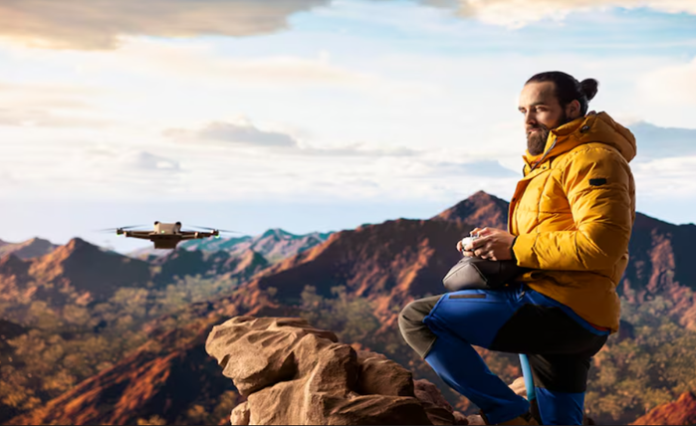For experienced pilots, flying a remote-controlled drone is no longer just a hobby—it’s an art form. The thrill of mastering aerial maneuvers and pushing the boundaries of speed and agility has evolved dramatically with the rise of FPV (First-Person View) drone technology. FPV offers a level of immersion that traditional line-of-sight flying simply cannot match, providing pilots with an exhilarating sense of freedom that is reshaping the RC community.
The Essence of FPV
FPV drone flying is different from conventional RC piloting in a fundamental way: it places the pilot in the cockpit. Equipped with a camera that streams live video directly to goggles or a monitor, FPV allows pilots to see from the drone’s perspective. This first-person viewpoint transforms ordinary flying into an immersive experience, making it feel as though the pilot is soaring through the air rather than merely guiding a machine remotely.
For the seasoned pilot, this immersive perspective enhances spatial awareness and precision. Complex aerial maneuvers, tight turns, and high-speed racing become not just feasible, but thrilling. FPV is not just about speed; it’s about control, finesse, and the artistry of flight.
Pushing the Limits of Performance
FPV drones are designed for agility and responsiveness. Unlike traditional drones, which prioritize stability and ease of use, FPV drones reward skill and experience. They respond instantly to subtle stick inputs, allowing pilots to perform rapid rolls, flips, and high-speed dives with remarkable accuracy. For the experienced pilot, this is where the real challenge—and excitement—lies.
The hardware itself is a testament to the evolution of RC technology. Lightweight frames, high-performance motors, and advanced flight controllers work together to create drones capable of speeds exceeding 100 miles per hour. Customization is a core aspect of FPV flying, with pilots often building or tuning drones to suit their personal style, whether it’s racing, freestyle acrobatics, or cinematic aerial photography.
The Thrill of Freestyle Flying
Freestyle FPV flying is where creativity meets skill. Pilots navigate natural landscapes, urban environments, or custom-built courses, weaving through trees, diving through gaps, and performing intricate aerial stunts. Many pilots rely on a trusted RC store to source high-quality frames, motors, and components, ensuring their drones perform at peak levels. The freedom of FPV flying allows for expression akin to extreme sports, where each flight is a unique performance. Unlike racing, which emphasizes competition and lap times, freestyle is about flow, rhythm, and the artistry of motion.
For experienced pilots, freestyle challenges both technical mastery and creative vision. Pilots must anticipate wind conditions, execute precise maneuvers, and constantly adapt to the environment—all while maintaining smooth, cinematic lines of flight. The result is a flight experience that is as mentally stimulating as it is visually breathtaking.
Racing: A High-Octane Challenge
FPV racing has grown into a global phenomenon, combining speed, strategy, and split-second decision-making. Experienced pilots thrive in this high-pressure environment, navigating tight gates at incredible speeds while maintaining control and precision. The adrenaline rush is unmatched, with races often decided by fractions of a second.
Competitive FPV racing also fosters community and camaraderie. Pilots share tips, modifications, and strategies, pushing one another to innovate and refine their skills. This collaborative spirit elevates the hobby beyond mere individual achievement, transforming it into a vibrant culture centered around mastery of the craft.
Safety, Skill, and Responsibility
While FPV offers unparalleled freedom, it also demands responsibility. Experienced pilots understand the importance of safety measures, including flying in designated areas, respecting local regulations, and maintaining situational awareness. The immersive nature of FPV can make spatial judgment challenging, especially at high speeds, making pre-flight planning and adherence to best practices essential.
Moreover, the skill required for FPV flying is not trivial. Pilots must develop muscle memory, hand-eye coordination, and an intuitive understanding of aerodynamics. Progression in FPV flying is a journey of continuous learning, rewarding dedication and patience with ever-increasing control and creativity.
Embracing the FPV Lifestyle
For the experienced pilot, FPV drone flying is more than a pastime—it’s a lifestyle. It combines technical expertise, artistic expression, and adrenaline-fueled excitement in a way few other hobbies can. Whether racing through custom courses, performing freestyle stunts in breathtaking landscapes, or simply experiencing the joy of unencumbered flight, FPV provides a unique sense of freedom that traditional RC flying cannot match.
In a world where technology often separates us from direct experiences, FPV reconnects pilots with the pure thrill of flight. It’s an invitation to see the world from a new perspective, challenge personal limits, and embrace the artistry of motion. For those ready to step beyond conventional RC flying, FPV offers a truly immersive journey—one where skill, creativity, and freedom converge in the sky.

